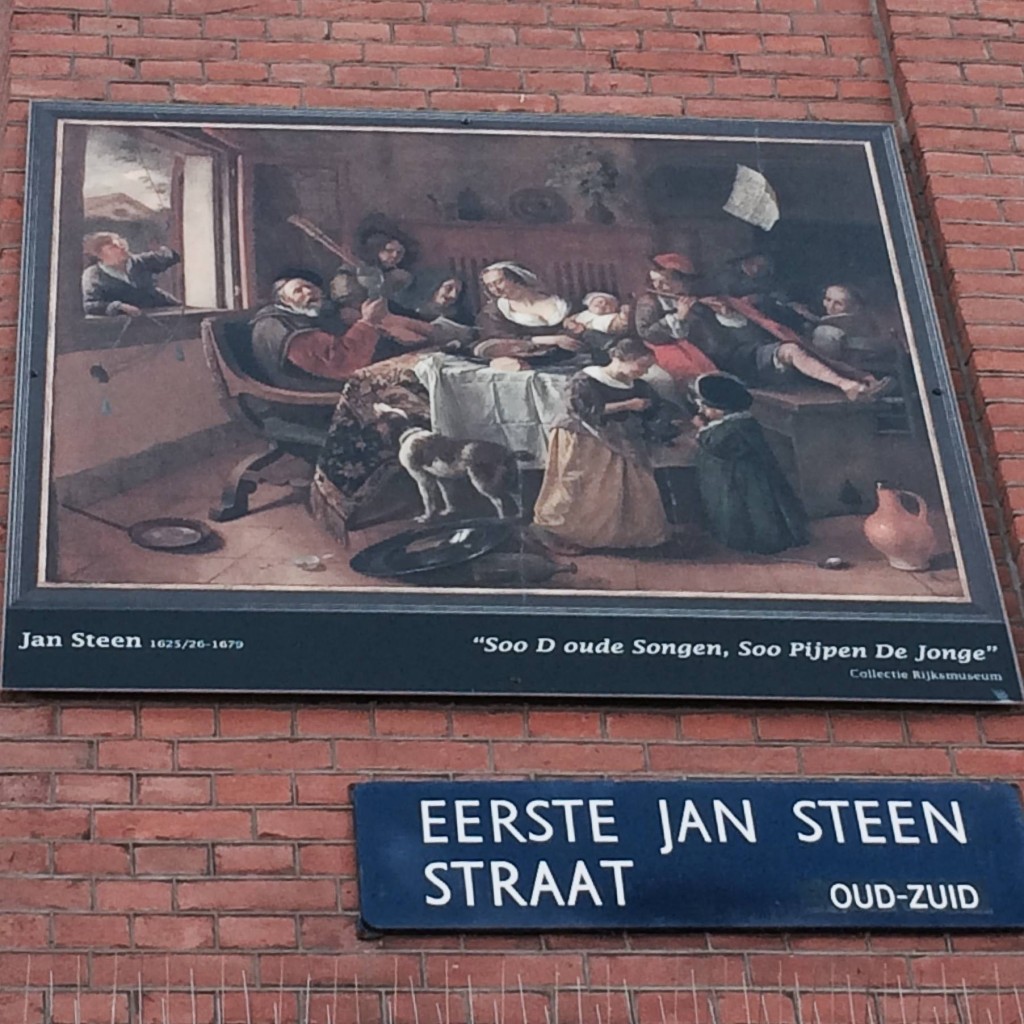17th century Dutch painter Jan Steen is known for depicting ordinary people having a good time in somewhat chaotic (household) settings. A well known Dutch saying is based on his paintings: when a room or situation is described as ‘een huishouden van Jan Steen’ (a ‘Jan Steen household’) it means it is messy 🙂
The painting in the photo shows the title ‘Soo D oude Songen, Soo Pijpen De jonge’ which is actually the text on the piece of paper nailed to the wall in upper right corner. In other words: ‘the young imitate the behaviour of the elders’. Here the verb ‘pijpen’ means ‘to play the flute’ (which is the old-fashioned meaning of the verb; the modern meaning is in a way similar however completely different 😉 ).

Photo taken on Eerste Jan Steenstraat – Amsterdam
For comments please see the original Facebook post.

